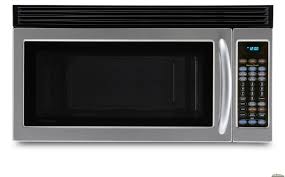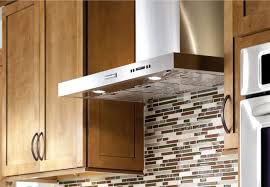- Home
- /
- Manager's Messages
- /
- Microwave Oven Maintenance Tips
Microwave Oven Maintenance Tips
Posted By kdub on August 1, 2016
Before cleaning a microwave oven, make sure all controls are off and the microwave oven is cool. Always follow label instructions on cleaning products. Milled soap like dish soap, water and a soft cloth or sponge are suggested unless otherwise noted. Never run a microwave empty.
Microwave oven cavity:
To avoid damage to the microwave oven cavity, do not use a soap filled scouring pad, abrasive cleaner, steel-wool pad, gritty washcloth or recycled paper towel. The area where the microwave oven door and frame touch when closed should also be kept clean.
Average soil; use a mild nonabrasive soap (dish soap) and sponge or lint-free cloth to wipe the surface clean. Rinse with a cloth or sponge and warm water that as the water squeezed out so it is not dripping and dry with a soft lint-free cloth.

Heavy soil; use a mild non-abrasive soap after heating 1 cup of water for 2 to 5 minutes in the microwave oven. The steam should soften the soil. Rinse with a cloth or sponge and warm water with the water squeezed out so it is not dripping and dry with a soft lint-free cloth.Image result for microwave
Remove odors; heating 1 cup of water with 1 tbs. of either lemon juice or white vinegar for 2 to 5 minutes in microwave oven should help remove any lingering odors.
Microwave Inlet Cover;
To avoid arcing and microwave oven damage, the microwave inlet cover should be kept clean by wiping it with a wet cloth.
Turntable; use a mild cleanser and scouring pad to clean the turntable. The turntable can be cleaned in the dishwasher as well. Do not operate the microwave oven without the turntable in place. Return the turntable to the interior of the microwave immediately after cleaning.
Microwave oven door and exterior: Use a mild non-abrasive soap (dish soap) and sponge or lint-free cloth to wipe the surface clean. Rinse with a cloth or sponge and warm water that as the water squeezed out so it is not dripping and dry with a soft lint-free cloth. Glass cleaner and paper towels or a non-abrasive plastic scrubbing pad can be used on difficult spots. Apply the glass cleaner to the paper towel or pad and not directly to the surface.
Control Panel; use a mild non-abrasive soap (dish soap) and sponge or lint-free cloth to wipe the surface clean. Rinse with a cloth or sponge and warm water that as the water squeezed out so it is not dripping and dry with a soft lint-free cloth. To avoid damage to the control panel, do not use chemical or abrasive cleansers.
Image result for range hood exhaust filter
 Range Hood Exhaust Filter; remove and clean grease mash filters monthly. Grease filters can be soaked in the sink in very hot or boiling water and degreasing dish soap along with a ¼ cup of baking soda swished around with a brush till water is soapy for ten (10) minutes. A non-abrasive soft cleaning brush may be used if needed. Then rinsed with water until it runs clear, let dry and re-install. Filters can also be placed in the dishwasher and cleaned.
Range Hood Exhaust Filter; remove and clean grease mash filters monthly. Grease filters can be soaked in the sink in very hot or boiling water and degreasing dish soap along with a ¼ cup of baking soda swished around with a brush till water is soapy for ten (10) minutes. A non-abrasive soft cleaning brush may be used if needed. Then rinsed with water until it runs clear, let dry and re-install. Filters can also be placed in the dishwasher and cleaned.
Charcoal Filter; here are a few tips on recognizing when a microwave charcoal filter should be replaced: When the filter is fills with cooking grease. If, upon using the vent system, odors detected are different from the foods which are being cooked. This would suggest a build-up of heavy grease that has trapped previous cooking odors in the filter. If the entire surface area of the charcoal filter appears to be shiny, this would suggest the presence of a heavy grease build-up since the filter’s surface normally appears as dull and porous. If these signs are present replace the filter.